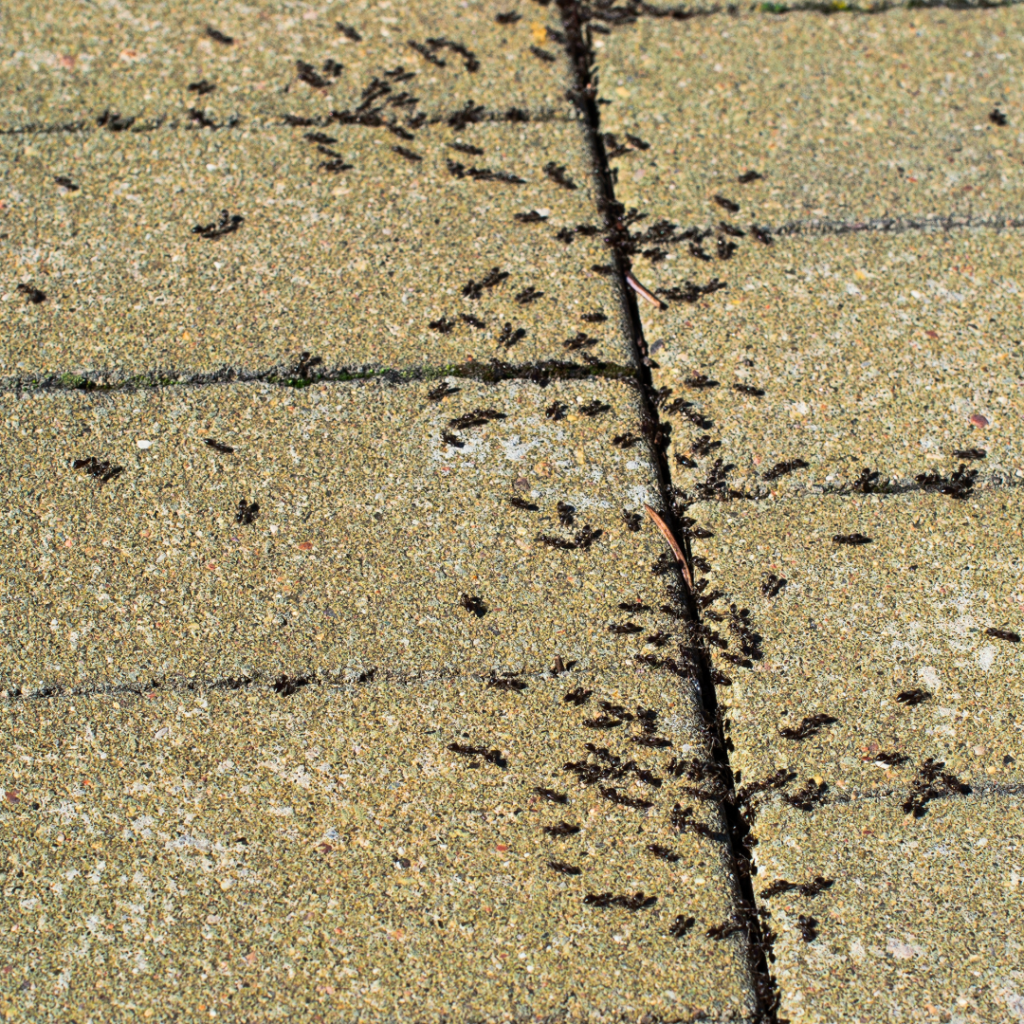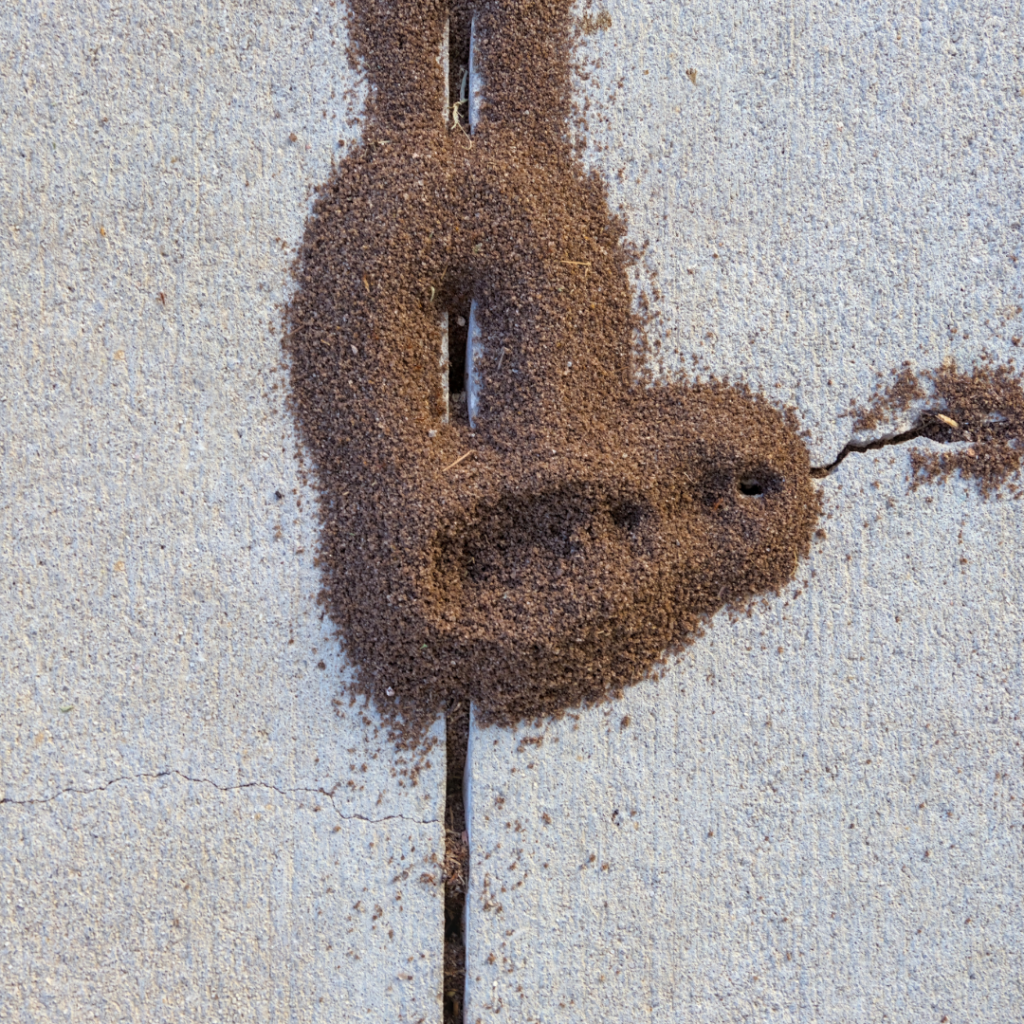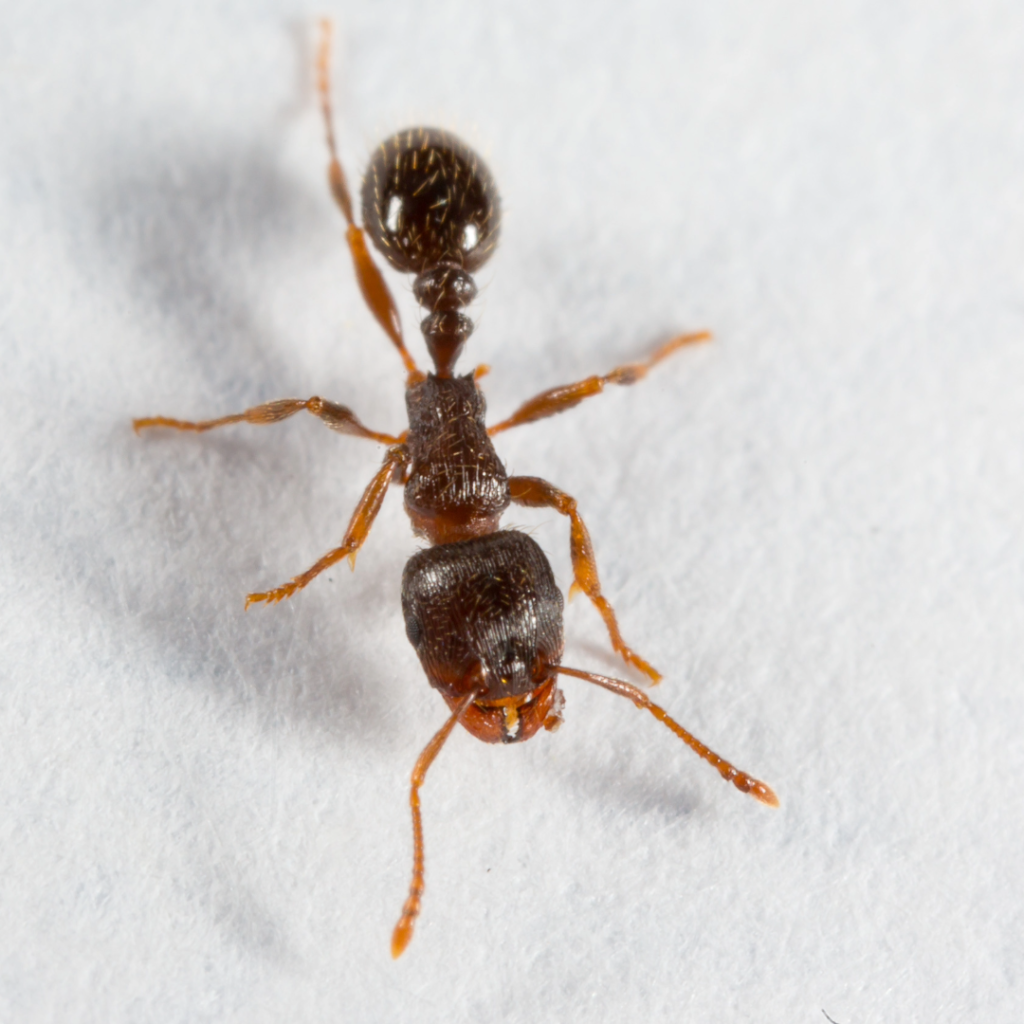Finding ants in your home is never enjoyable, especially when they seem to come from nowhere. Pavement ants are a common culprit in many households, using their small size to sneak in through the tiniest cracks and crevices.
These small, brownish-black ants can swarm your kitchen countertops quickly, clustering around food crumbs or taking over sticky spills. Understanding why you have pavement ants in your house is the first step to keeping your home ant-free.
In this blog, we’ll learn more about what makes these pests tick, why they come indoors, how to spot an infestation, and effective ways to keep them at bay. Keep reading to learn more, and remember to contact the experts at Natura at the first sign of a tough pest infestation!
Identifying a Pavement Ant Infestation
Pavement ants are tiny, about 2.5 to 3 millimeters long, with a dark brown to black coloration. If you look closely enough, you can even spot small parallel lines that run from their head to their thorax.
Because many ant species look similar, it can be hard to tell them apart. Pavement ants have light legs and antennae that can help you differentiate them from other small ants that may invade your household.
As their name suggests, pavement ants are regular inhabitants of sidewalks, driveways, and building foundations. They’ll typically sneak into your home through cracks in your foundation or gaps around your windows or doors.
Once indoors, they’ll take over your kitchen, pantries, or other areas where food is stored. They aren’t particularly picky about their meals but often flock toward sweet substances and greasy foods.
Besides the visual cues, you can often identify an infestation by displaced soil or sand in the pavement or around the edges of the sidewalk. Indoors, you may notice trails or clusters of ants leading to or around food.
Here’s Why You Have Pavements Ants in Your House
Pavement ants generally enter your home through tiny openings in your foundation, gaps around windows and doors, or cracks in walls. They can also find their way in through utility lines and pipes that lead into the house.

Poor food storage, spills, and crumbs left on your countertops or floors can quickly lure pavement ants inside. Keep your kitchen clean and store food in airtight containers to reduce the chances of an infestation.
Pavement ants prefer to nest in areas with access to both warmth and moisture. Indoors, they might build nests in wall voids, under floors, or in insulation. Outside, they often nest under sidewalks, driveways, and building foundations. Moisture control in and around your home can help deter ants from nesting nearby.
Weather changes can also drive pavement ants indoors. During heavy rains, their outdoor nests may flood, prompting them to seek drier conditions elsewhere. Similarly, extreme heat or cold can make the inside of your home more appealing to ants looking for a stable environment.
Prevention & Control Against Pavement Ants
Pavement ants can be persistent pests once they establish colonies near or inside your home. However, you can take several proactive steps to prevent infestations and effectively control existing ones.
Keep Your Home Clean and Tidy
Regularly clean your floors, countertops, and other surfaces to clear away food crumbs, spills, and residue that may attract ants. Pay particular attention to kitchen areas where you prepare and store food.
Store food items, including pantry staples, in airtight containers to prevent ants from accessing them. Avoid leaving food uncovered on countertops or in open packaging, as this can attract foraging ants.
Besides your kitchen, remember to tidy up after your pets, too. After each use, clean pet food and water bowls as leftover food or long-standing water can serve as additional food sources for these wandering ants.
Seal Entry Points
Seal cracks, gaps, and openings on your home’s exterior walls to prevent ants from entering. Use caulk to seal gaps around windows, doors, pipes, and utility lines, as well as cracks in the foundation and walls. Pay attention to areas where utility lines enter your home, as these can serve as entry points for ants and other pests.
Outdoor Yard Maintenance
Trim vegetation away from the exterior of your home to create a barrier that ants cannot easily traverse. Keep mulch, leaf litter, and other organic debris away from the foundation, as these materials can provide additional harborage for ants. Remove standing water and repair leaky faucets or clogged gutters, as these spots can attract ants and other insects like mosquitoes.

Regular Inspection and Monitoring
Inspect your home often to identify potential entry points, nesting sites, and signs of ant activity. Monitor areas where ants frequent, like kitchens, bathrooms, and utility rooms, for any signs of infestation. Look for ant trails and dirt mounds both indoors and outdoors.
Professional Pest Control in the Vancouver-Portland Metro
When DIY alternatives fall short, or an infestation grows out of control, turn to professional pest control services to lend a hand. Our pest management professionals have the expertise, tools, and resources to identify, treat, and prevent pavement ants from taking over your home.
When you have pavement ants in your house, contact us for customized treatment plans that address the immediate infestation and any underlying factors that may influence pest activity. Don’t let these tiny terrors take over! Get in touch with the ant experts today!



